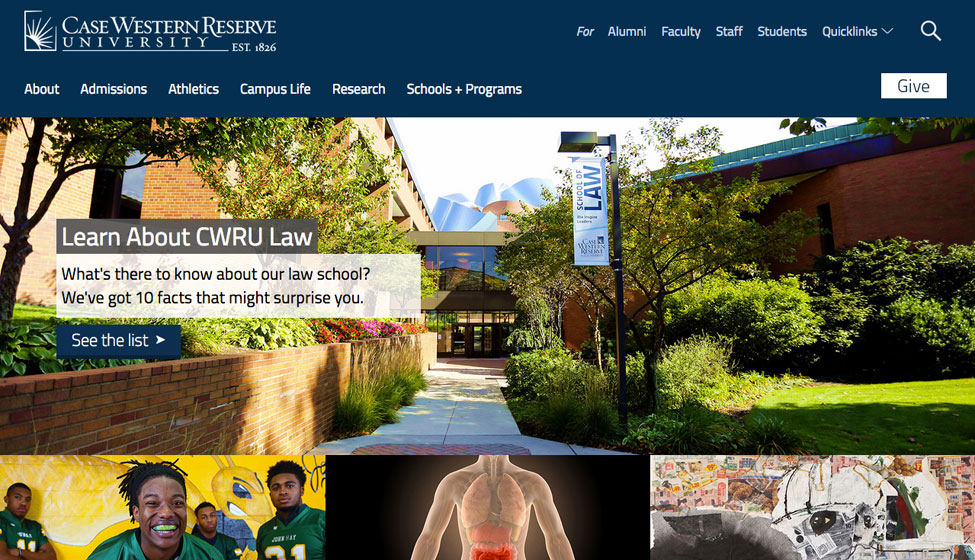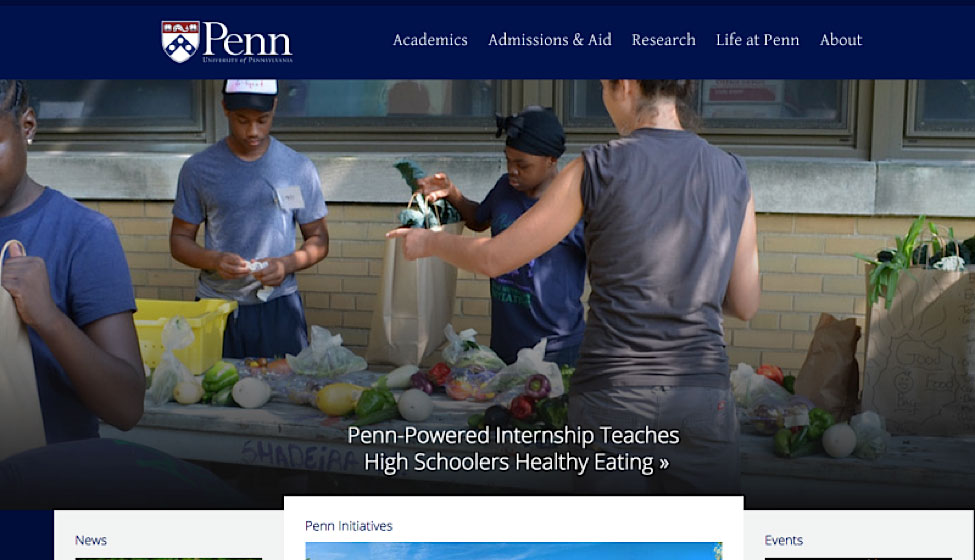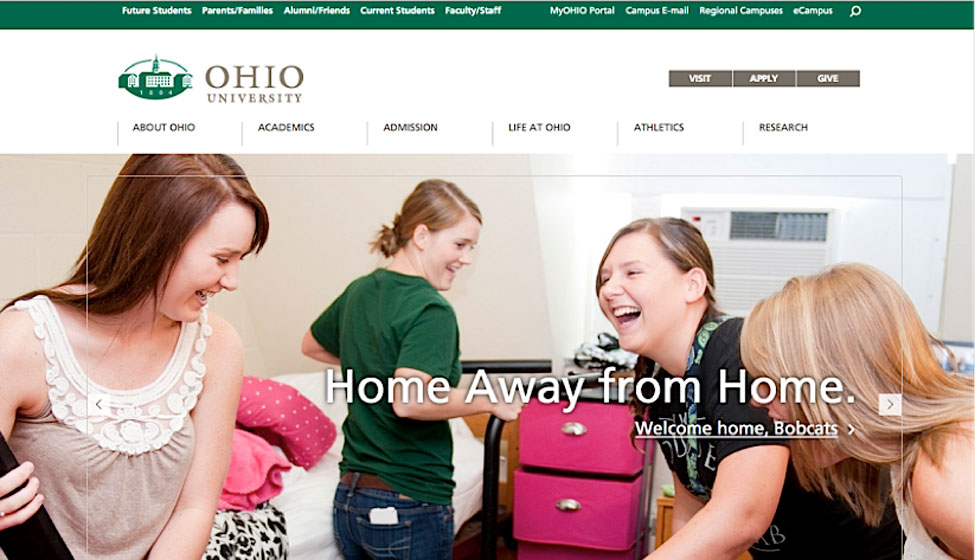Introduction
They all built massive audiences of people who come back over and over again. Khan Academy has over 6,000 instructional videos on their site. TED has over 5 million subscribers to date on YouTube. Coursera, Udacity, and edX now have over 24 million students taking courses on their sites.
How did they separate themselves from the pack and become more than just another education company with tutorial videos? They all had rock solid content marketing strategies. I’ll show you how to craft a content marketing strategy for your school so that you attract the right students.
Table of Contents
Case Study: TED
Let’s take TED, for example. They built a YouTube channel with over 5 million subscribers and created a brand that many people are familiar with.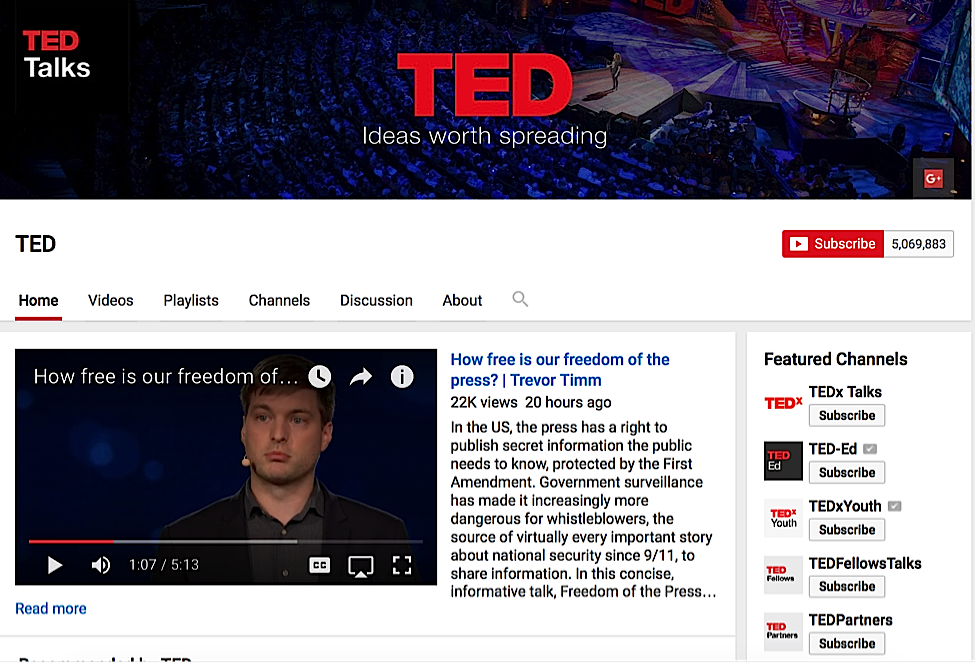
You probably heard of TED first through one of their YouTube videos, many of which have gotten tens of millions of views.

TED does so well because they’re committed to creating “ideas worth spreading.”
There are lots of different reasons why people spread ideas. Jonah Berger, a professor at the Wharton School of Business, wrote in his book Contagious: Why Things Catch On that there are a few key factors behind why people share content.
Some of these reasons are:
- People want to look smart.
- They identify with it (content about introverts or creative people are probably only read by those who identify with that label).
- It makes them feel strong emotions.
- They use content as a way to show their identity (i.e. they might want to show their friends that they’re smart, funny, caring, etc.).
- They just find it extremely helpful, and think that others would benefit, too.
- People just love to hear a good story.
TED understands that rich storytelling is what makes content go viral, so they’ve built their business almost entirely on that concept.
74% of college presidents say that schools can’t take any more budget cuts without it affecting the quality of education that the students receive, so attracting more students is one way of helping soften those blows. EdTech companies are also facing difficulties, though of a different nature.
If you run a university, it’s critical that you understand just how important good storytelling and content marketing is.
The Problem with Marketing in Education
Most universities are living in the past when it comes to their marketing efforts.According to Marketing Land, universities are still only focusing on handing out brochures, flyers, and white papers that talk about how great their school is. This isn’t a bad thing — in fact, schools that use old-fashioned direct mail marketing should keep doing it if it works.
But the places (hint: not always physical locations) where students spend their time and put their attention has changed.
Over 30% of millennials use Snapchat regularly, and over 27% of the entire U.S. population uses Instagram. Facebook and Twitter continue to be very popular with millennials.
The way students take in information, what they resonate with, and where they go to find information has shifted — and yet schools haven’t adapted.
Good marketing isn’t just about getting on Instagram, Facebook or Twitter and posting consistently. It’s about getting into the heads of your target audience and delivering your message in a way that hits them emotionally. This is where schools fall short.
These pages don’t evoke very strong emotions. When students read them, they won’t feel pulled towards any one particular school.
Companies start sounding the same when they look to one another for guidance and copy each other instead of focus on what their target market wants. Once you start sounding like everyone else, you stop connecting with your audience on a emotional level or give them any special reason to choose you.
And since people make buying decisions emotionally, sounding the same as your competitors means you’re leaving money on the table.
For example, when U.S. News asked graduate students why they chose the schools they did, here’s what one student wrote:
I was welcomed into the UDM Law family from the moment I walked in the door. The close-knit community of students, faculty, and administrators provides a learning environment I found unparalleled in support and encouragement.
Add to that UDM’s commitment to making its graduates “practice ready” through its clinics, law firm program courses, and writing across the curriculum, and I was sold.”
Other students said they chose their school because they loved the people, the school traditions, and how beautiful the campus looked. More logical factors like school rank and quality of research are still important, but they’re almost an afterthought.
Students noticed the intangible elements first, and those are the factors that influenced their decision the most.
How many university websites actually showcase these intangible factors that play such a big role in students’ decisions to enroll?
Here’s what Rick Hardy has to say about marketing in the higher education space:
A key component of our marketing strategy is storytelling. Academic content isn’t enough. Marketing higher education isn’t about selling widgets. A higher education brand lives in the head and the heart, and decisions about where to go to school are made there, so our content has to touch both.
Good content marketing is about illustrating how your school is different from all others, and telling your story to potential students in a way that delivers results.
Let’s go through some examples of schools that do this really well.
Educational Companies that Are Doing Content Marketing Right
Stanford
Stanford does a great job of showing a different side of their school on their site. For example, on the Stanford Graduate School of Business Tumblr blog, they post inspirational quotes and images, they feature stories from alumni, and they mix business content within it.
You’ll find unique and motivational content such as the image below on their blog:
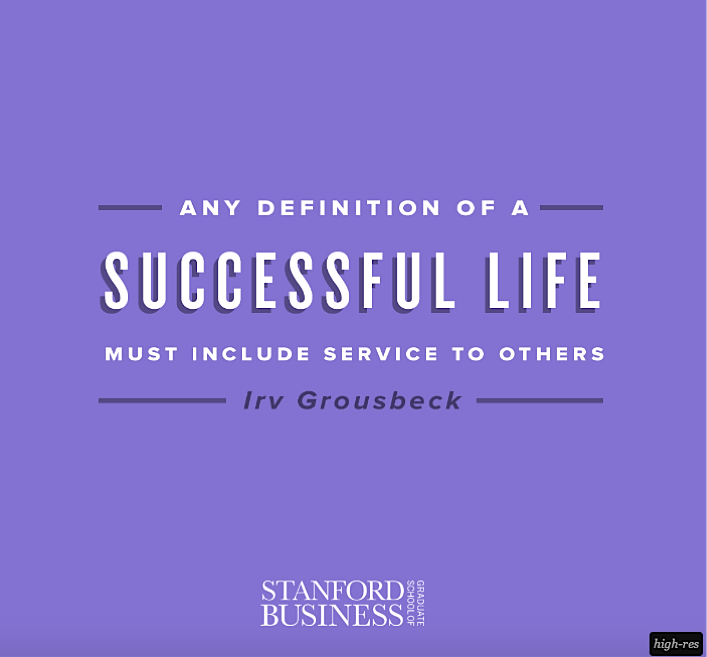
You’ll also find business content that appeals to the type of people who would apply to Stanford, like this post:
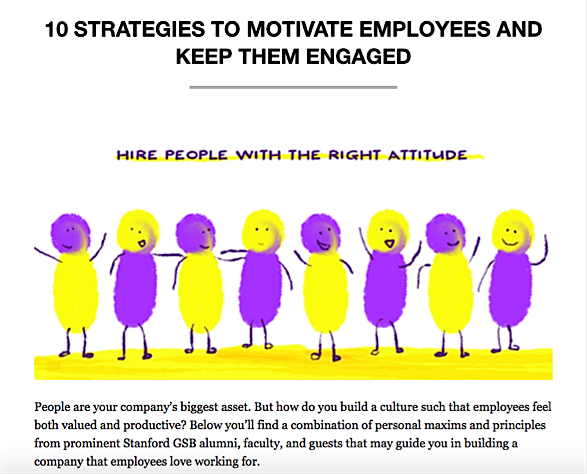
By featuring alumni stories, posting inspirational content that also shows their point of view on different topics, and mixing in useful business content, they’ve built their own “voice.”
According to Marketing Land, you should make a list of all the qualities your school has, choose the ones that other schools don’t have, and emphasize that particular quality in your content.
Concordia University Irvine
In a physics class I took in college, our professor said something that I remembered even years later. On the first day of class, he said, “I’m here because I enjoy teaching. I think most of your professors do, too, but they just don’t tell you. I thought I should tell you.”
Even though it was something he said almost in passing, it immediately set him apart from all the other professors in our eyes. One of the best ways to connect emotionally with your audience through your content is by telling them why you do what you do.
For example, Concordia University produced this video that featured one of their teachers, Greg McFall. McFall was teacher of the year in 2008 in California, and an alumnus of Concordia University Irvine.

According to Rick Hardy, the video talks about how McFall transforms the lives of his students, how he teaches them, and what he believes in. The video was meant to inspire other teachers as well as students.
Successful alumni often represent some parts of their university’s culture. The intangible elements of their experience likely played a role in molding them into the person they are today, which makes for great content.
Khan Academy
Khan Academy’s success is a model that all education companies should study.
There’s a reason why they’re one of the most successful modern day EdTech companies. In fact, they’ve got more than one million teachers registered on their platform and students complete over 4 million tutorials per day in subjects like math, economics, and computer science.
Khan Academy provides students with the resources to construct their own learning environment, so that it adapts to the individual rather than taking a “one size fits all” approach.
Video marketing is primarily what helped drive growth for the Khan Academy. They’ve uploaded a series of YouTube tutorials about the various subjects that they cover to reach a wider audience — and many have received millions of views like this one about vectors and scalars:

Because Khan Academy specializes in creating short, easily digestible tutorials on different subjects, viewers can quickly grasp the subject at hand without depleting a lot of cognitive energy or sifting through tons of information. “Easily digestible” is an important factor in making your content spread like wildfire. B2B companies know the benefits of video marketing: 73% of business-to-business companies report that video marketing results in significant ROI for them.
Bank of America used video marketing to improve their brand image because they understood that video is a great way to cement information one’s mind. People only remember about 10% of what they hear three days later, but that number goes up to 65% if the information is paired with video.
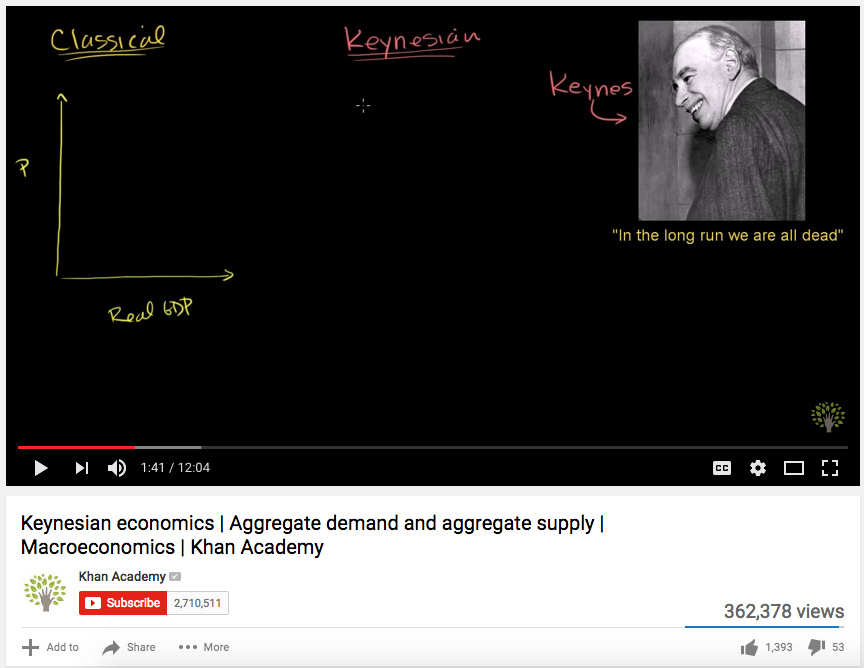
A Khan Academy lesson on Keynsian Economics
There are other ways to include video marketing within your overall marketing strategy as well — video can be used at every step in the buyer’s journey. For example, you might use tutorial videos to help teachers or students, and then leverage them to get to the real decision makers.
University of Michigan
Like Stanford, University of Michigan’s Engineering department also runs their own Tumblr blog.
But instead of posting generic content, they post exciting interviews, like the contributions that Michigan Engineering alumni made to help the U.S. win the sailing cup.
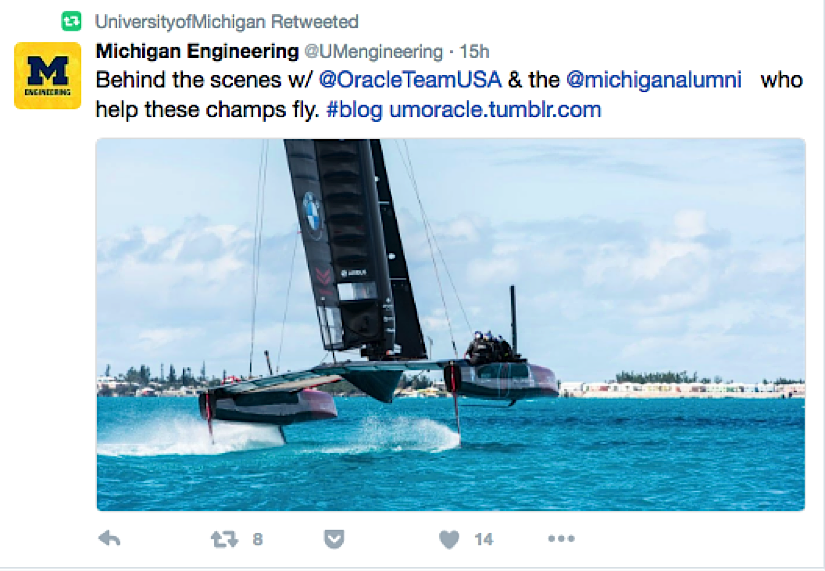
The best way to market any product is by showing how successful your customers are after using it. Similarly, showing off cool things that alumni are doing (that prospective students would also find interesting) is a great way to tell your university’s story in a way that captures prospective students’ attention, inspires them, and makes them want to apply.
Coursera
Coursera is an online school where anyone can enroll in classes to learn topics ranging from coding to marketing to accounting.
They also maintain a Tumblr blog where they put a more personal voice behind their brand. For example, in one of their posts, they document the transformation of one of their students who felt “trapped” in her career path and used Coursera to build the confidence to pursue what she really want.
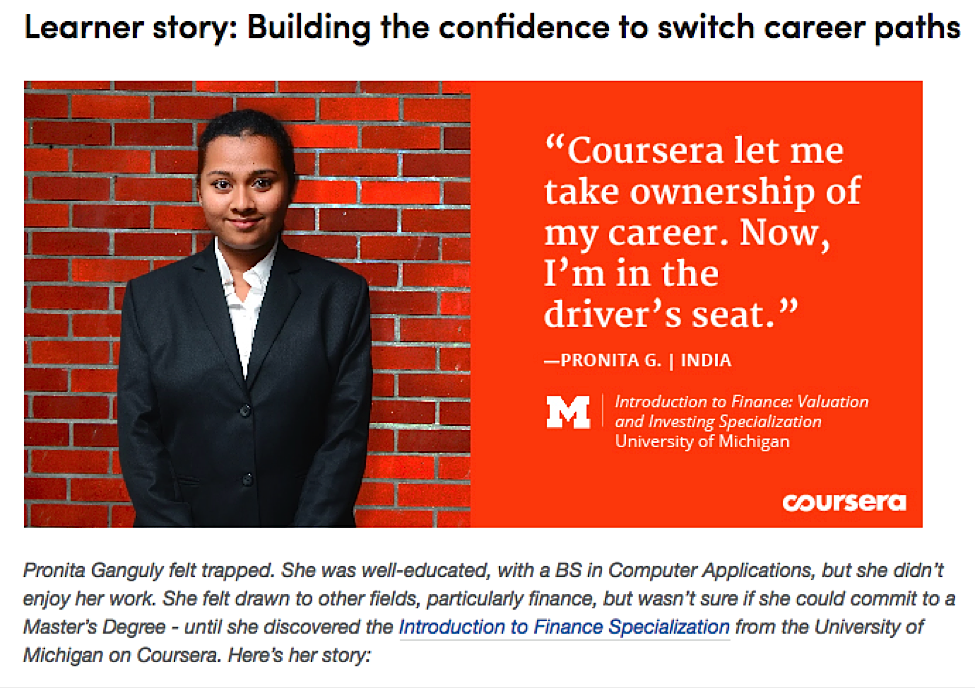
Source: Coursera Blog
Coursera also includes other stories on their blog that describe how they were able to change lives. One Tanzanian farmer was able to use material from a Coursera course to bring sustainable farming to his village.
Conclusion
There are a variety of ways to approach content marketing. You could film videos tutorials or interviews with students, teachers or alumni who are making a difference, you could write blog posts, post images, or mix them all together. What matters is whether you’re able to uncover what’s unique about your business and communicate it in a way that’s exciting to the students you’re trying to reach.If you do that, you’ll instantly separate yourself from the (boring) competition.



